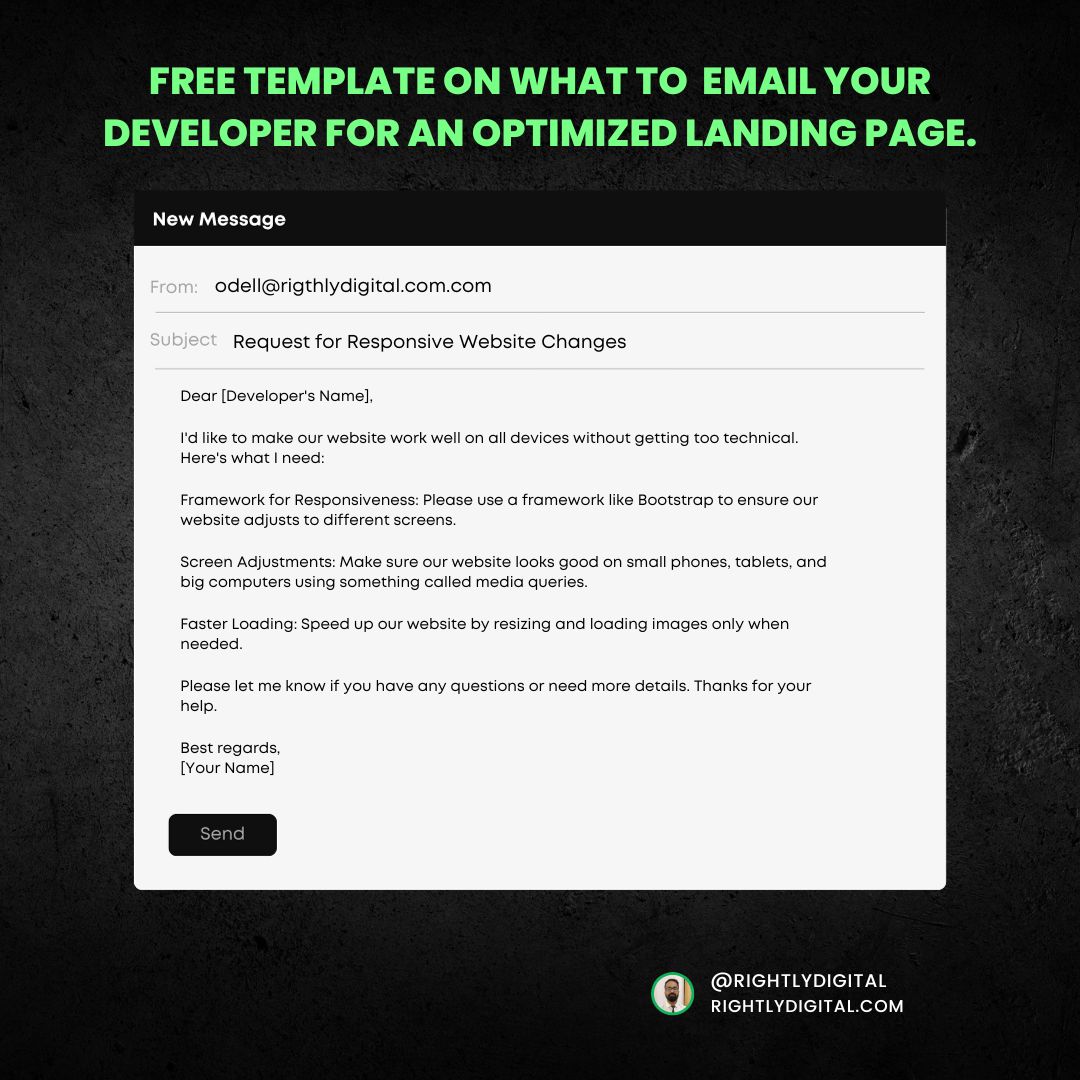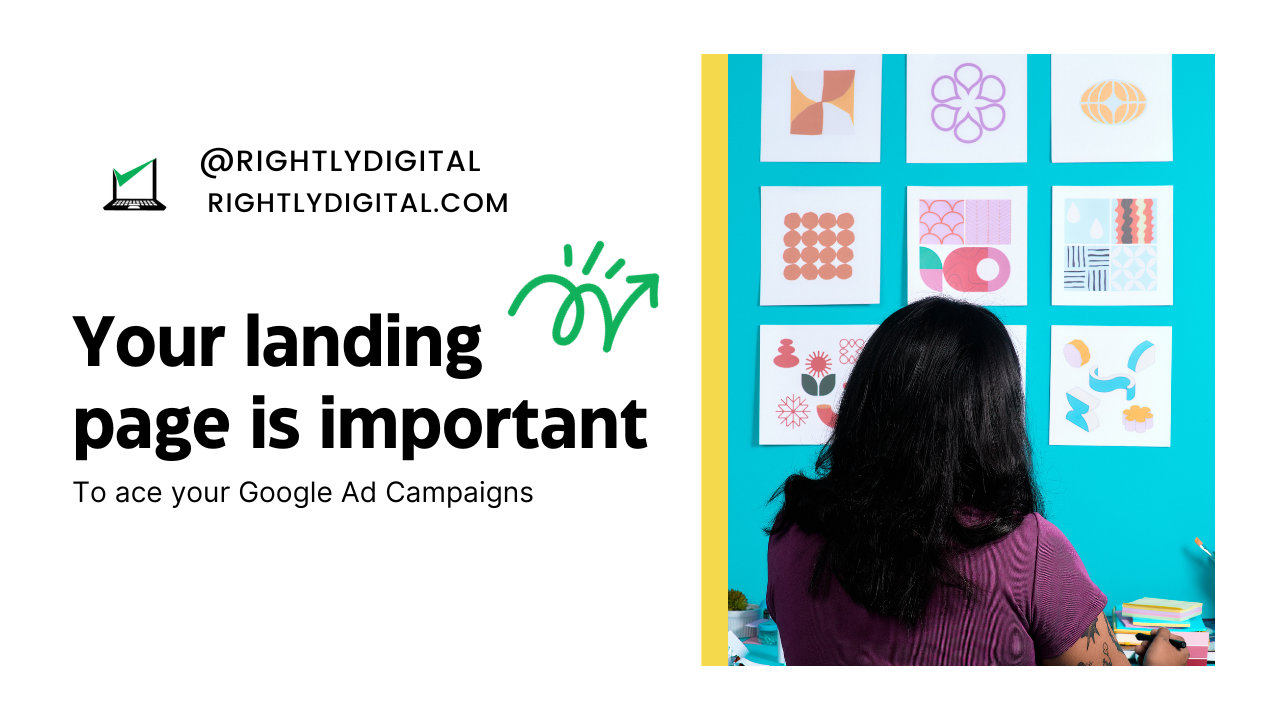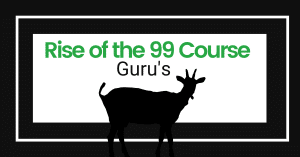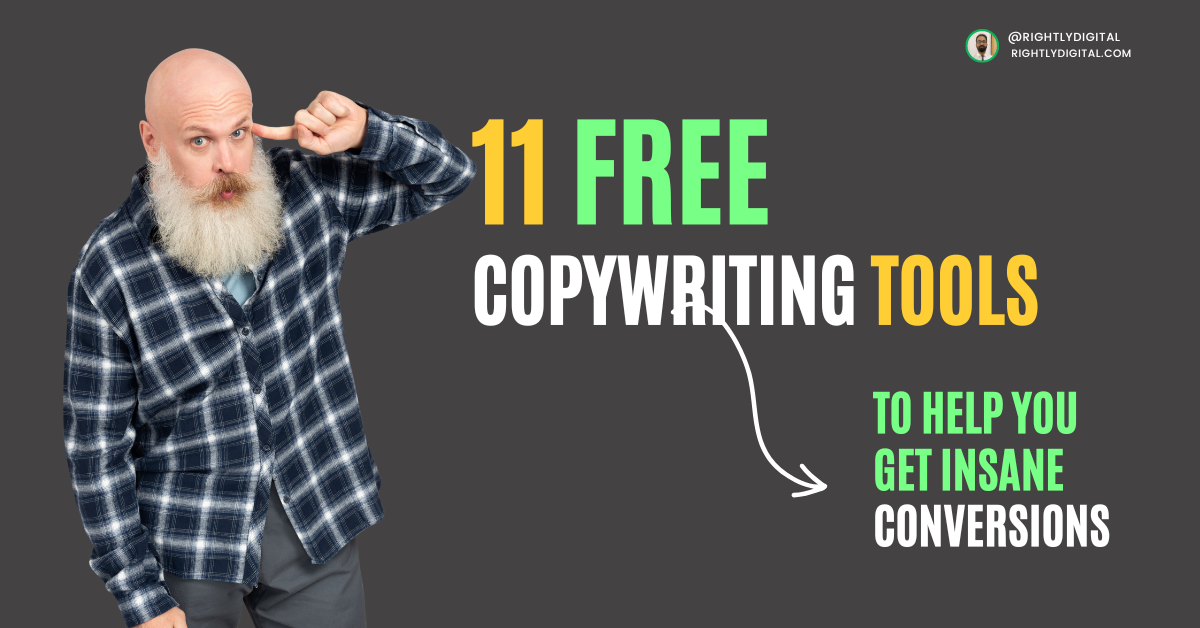Landing pages are one of the most important and often overlooked criteria for successful Google Ads campaigns.
We often fawn about keywords, ad copy, budget, campaign type, etc when running Google Ads, but do you know what happens when a person clicks on your ad? They reach your landing page. This can make-or-break your campaigns.
If you have an optimized landing page, it will lead to sales and conversions, and if not, you end up paying more for your ads and don’t even get your money’s worth.
So in this article, I am going to help you with some powerful strategies to make your landing page relevant to improve your overall Google Ads and also increase your conversions!
But first, let me start from the basics
Table of Contents
What is a Landing Page?
A landing page is a website page with a purpose. It is a page where you drive customers to take specific action. In most cases, the aim of a landing page is to get more leads, but it could also be used to get direct sales.
Typical landing pages entice users to share their contact information in exchange for an offer. This could be a free eBook, whitepaper, brochure, strategy call, etc.
Landing pages are crucial from a Google Ads perspective (and otherwise too) because it is the primary source of contact for users when they interact with your business.

Your ad content should match your landing page. It needs to be relevant. It should offer a seamless user experience.
Now that you know what a Landing page is, let us dive into the juice of this article: How to Create a Landing Page that Increases the Quality of Your Google Ads Campaigns (PPC Campaigns)
- Your Ad Message and Landing Page Should Match
Also known as message matching, your ad and your landing page need to have the same messaging. For example, if you are running an ad to promote a postgraduate course in digital marketing, your landing page should also convey the same message.
Look at the example below for the ad for MICA


It is clearly evident that their ad and their landing page are relevant and follow the message-matching formula.
Both the PPC ad and the landing page are clear of what the offer is, (a Digital Marketing Course by MICA), the theme is similar for both – That you can learn digital marketing from industry experts with MICA.
You can see site link extensions on the PPC ad like ‘Easy EMI Options’ while the landing page clearly mentions the breakdown of EMI options every month
Another aspect that you need to spend a lot of time with both your PPC ad and your landing page is adding a clear and concise Call-to-action (CTA). Make sure that your CTA is placed at a position where users can clearly see and take action on your offer.
Data indicates that a CTA which is placed right on the top of a landing page (Above-the-fold) with contrasting colors, similar to the MICA example, will boost conversions by about 161%
So tips to improve your landing page CTA include:
- Keep it in a position that users can easily see
- Use contrasting colors as your CTA button
- Use action words like “Download Now”, “Get Your Free eBook Here”, “Get Certified Today”
- Improve the Website Speed
People running Google Ads talk about user experience and one of the main factors that contributes to user experience is website speed.
If your website loads within 2 to 3 seconds, it will improve the user experience tremendously.
One of the main factors that improves the landing page experience overall is your website speed
To ensure that your WordPress website loads quickly, you can take several technical steps. Nowadays, various tools and plugins can help you improve your website’s performance.
Here are some key strategies:
Optimize Images: Use plugins to compress and optimize images, reducing their file sizes without sacrificing quality.
Content Delivery Network (CDN): Implement a CDN to distribute your website’s content across various server locations. This reduces the geographic distance between your site’s visitors and the server, resulting in faster loading times.
Fast Hosting: Choose a hosting provider with high-speed servers. Fast hosting is crucial for reducing the time it takes to load your website.
By addressing these technical aspects, you can significantly improve your website’s loading speed, providing a better experience for your users.
- Make it Easy to Navigate
Another important attribute that contributes to the overall improvement of your quality score (Google’s indicator that your ad campaigns are great), is ensuring that it is easy for users to navigate and find what they are looking for on your website.
Create content that is structured and clearly visible including CTAs across the landing page. This all contributes to the landing page relevance of your ad campaigns.
If a visitor has to struggle to find what they are looking for on your site, you have lost the game my friend.
Here are three tips to improve the navigation experience on your landing page:
Intuitive Navigation: Use a clear and organized menu structure to help visitors find information effortlessly. A user-friendly menu can prevent them from getting frustrated and leaving your site.
Clear Call to Action: Every page should have a distinct and prominent call to action (CTA). Make sure visitors know what action to take next. Whether it’s signing up for a newsletter, making a purchase, or requesting more information, a clear CTA guides them in the right direction.
Organized Content: Organize your content in an intuitive way. Use headings, bullet points, and visuals to make the information easily scannable. People should be able to quickly find what they’re looking for without scrolling through lengthy paragraphs. An organized layout encourages visitors to stay on the page longer and explore your content.
- Responsive Landing Page
What do I mean by responsive? When I access your landing page on a mobile device, it should resize in such a way that all the text and elements fit perfectly on my mobile screen. If I access that same landing page on a desktop, it should adapt perfectly to the desktop screen, and if I use a tablet, it should resize in a way that optimizes it for a tablet.
This is known as a responsive website or landing page, and it will definitely improve your quality score and optimize your Google Ads.
Recently, I had the displeasure of visiting a very famous college website on my mobile device. The website was not mobile-responsive at all. All the text was tiny, and I had to zoom in just to search for the course I was looking for. Even their website menu was horrible. This is a clear example of a poor landing page.
In the end, I left the webpage and searched for another college. A bad website can cost you students, so keep that in mind!
Now I understand that many of my readers are not developers, and usually, it is a website developer who will be able to make your landing page more responsive, so here is a free template of what to email your developer. This will save you a lot of time.

Subject: Request for Responsive Website Changes
Dear [Developer’s Name],
I’d like to make our website work well on all devices without getting too technical. Here’s what I need:
Framework for Responsiveness: Please use a framework like Bootstrap to ensure our website adjusts to different screens.
Screen Adjustments: Make sure our website looks good on small phones, tablets, and big computers using something called media queries.
Faster Loading: Speed up our website by resizing and loading images only when needed.
Please let me know if you have any questions or need more details. Thanks for your help.
Best regards,
[Your Name]
Addressing Common Pitfalls in Landing Page Relevance

While optimizing your landing page for Google Ads, it’s essential to be aware of common pitfalls that can hinder your efforts. Avoiding these mistakes can help maintain the relevance and effectiveness of your landing pages.
1. Over-Optimization and Keyword Stuffing
Although optimizing your landing page with relevant keywords is crucial, over-optimization and keyword stuffing can be counterproductive. Keyword stuffing not only makes your content less reader-friendly but can also lead to penalties from search engines like Google. Instead, focus on using keywords naturally within your content and prioritize user experience.
2. Slow-Loading Pages
We’ve touched on page loading speed in a previous section, but it’s worth reiterating the importance of fast-loading pages. Slow-loading pages frustrate visitors, leading to higher bounce rates and lower conversion rates. Use tools like Google PageSpeed Insights to identify and address speed issues on your landing pages.
3. Inconsistent Messaging Between Ads and Landing Pages
One of the cardinal sins of landing page optimization is having inconsistent messaging between your ads and landing pages. When visitors click on your ad, they expect a seamless transition to a page that directly reflects the ad’s content and promises. If your landing page’s messaging doesn’t align with your ad, it can lead to confusion, frustration, and higher bounce rates.
4. Lack of Clear Value Proposition
Your landing page should communicate a clear and compelling value proposition to your visitors. In essence, visitors should understand what’s in it for them within seconds of landing on your page. Failing to provide a strong value proposition can lead to high bounce rates, as visitors won’t see a reason to stay and engage with your content.
5. Ignoring Mobile Users
With the increasing use of mobile devices, overlooking mobile optimization is a significant pitfall. If your landing page isn’t mobile-friendly or responsive, you risk losing a substantial portion of your potential audience. Test your landing page on various mobile devices to ensure a seamless experience for all users.
6. Complex Forms and Data Collection
If your landing page includes a form for lead generation or data collection, keep it simple. Long, complex forms with numerous fields can deter visitors from completing them.
Request only the essential information you need and consider implementing progressive profiling to gather more details over time as you build a relationship with the visitor.
Identifying and addressing these common pitfalls in landing page relevance is essential for maintaining the quality and effectiveness of your Google Ads campaigns. In the next section, we’ll explore real-world case studies of businesses that successfully improved their landing pages and the impact it had on their ad campaigns.
Tools and resources for landing page optimization

Here are some tools and resources for landing page optimization:
Recommended Tools for Keyword Research and Analysis:
- Google Keyword Planner: This free tool by Google is essential for keyword research. It helps you find relevant keywords, provides search volume data, and suggests keyword ideas.
- SEMrush: SEMrush is a comprehensive SEO tool that offers keyword research, competitive analysis, and tracking. It helps identify high-performing keywords and track your ranking for them.
- Ahrefs: Ahrefs is another powerful SEO tool that provides detailed keyword research, competitive analysis, and backlink data. It’s great for in-depth keyword analysis.
- Moz Keyword Explorer: Moz offers a keyword research tool that provides keyword suggestions, search volume, and keyword difficulty scores. It’s useful for identifying the right keywords for your landing pages.
Website Analytics and Testing Tools:
- Google Analytics: A fundamental tool for tracking website traffic, user behavior, and conversion rates. It provides valuable insights for optimizing landing pages.
- Google Optimize: A testing tool by Google that allows you to run A/B tests and multivariate tests on your landing pages to optimize their performance.
- Optimizely: Optimizely is a popular experimentation platform that enables A/B testing, personalization, and optimization of landing pages.
- Hotjar: Hotjar provides heatmaps, session recordings, and user feedback tools to help you understand how visitors interact with your landing pages.
Best Practices Guides and Resources for Further Learning:
- Moz Blog: Moz’s blog offers a wealth of information on SEO, including landing page optimization best practices and tips.
- HubSpot Blog: HubSpot’s blog covers a wide range of digital marketing topics, including landing page optimization and conversion rate optimization (CRO).
- Neil Patel’s Blog: Neil Patel’s blog and YouTube channel provide valuable insights on SEO, content marketing, and conversion optimization.
- CXL Institute: CXL offers courses and resources on conversion optimization and A/B testing, which are essential for landing page optimization.
- The Beginner’s Guide to SEO by Moz: This comprehensive guide covers the basics of SEO, including landing page optimization, and is an excellent starting point for beginners.
- Google’s Webmaster Guidelines: Google provides guidelines and resources for optimizing websites, including landing pages, to improve their visibility in search results.
These tools and resources can be invaluable for enhancing your landing page optimization efforts, improving your Google Ads campaigns, and boosting conversions.
Remember that continuous learning and experimentation are key to staying ahead in the ever-evolving field of digital marketing and SEO.
Conclusion
An optimized landing page can lead to conversions and sales, while a poorly designed one can lead to wasted ad spend. This article provides strategies for creating landing pages that enhance the performance of Google Ads campaigns.
Key Takeaways:
- What Is a Landing Page?: A landing page is a purpose-driven web page where you direct users to take a specific action, such as providing their contact information in exchange for an offer, like a free eBook or a consultation.
- Relevance Is Crucial: Landing pages are essential from a Google Ads perspective. They must be highly relevant to the ads you create. The content on your landing page should seamlessly match your ad, offering a consistent user experience.
- Message Matching: It’s essential to ensure that your ad and landing page share the same messaging. For example, if your ad promotes a postgraduate course in digital marketing, your landing page should convey the same message.
- Effective Call to Action (CTA): An effective CTA, placed prominently on your landing page, can significantly boost conversions. Use contrasting colors and action-oriented words to encourage user engagement.
- Optimize Website Speed: Website speed plays a significant role in user experience. A faster-loading website improves the overall landing page experience. Utilize tools and techniques to optimize your website’s speed, like image compression and content delivery networks (CDNs).
- Easy Navigation: User-friendly navigation is crucial. Ensure that visitors can easily find what they’re looking for on your landing page. Intuitive navigation, clear CTAs, and organized content contribute to an excellent user experience.
- Mobile Responsiveness: In an era of mobile browsing, having a responsive landing page is vital. It should adapt seamlessly to various devices, ensuring a positive user experience regardless of the screen size.
A well-optimized landing page is not only vital for Google Ads success but also for the overall user experience.
It’s crucial to align your landing page with your ad’s message, make navigation intuitive, and prioritize mobile responsiveness.
These elements combined with effective CTAs and fast-loading pages can significantly enhance the quality of your Google Ads campaigns.
Odell Dias is the founder of RightlyDigital.com where Online Marketing concepts are made easy. He has over 10 years of experience in the Digital Marketing industry, helping brands and individuals alike to achieve their marketing goals. He is known as one of the best digital marketing freelancers for small-to-medium-sized businesses.



